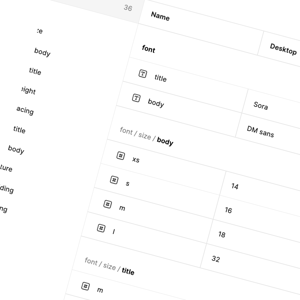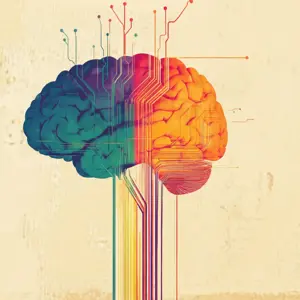The Age of AI began sometime before 2024, but it has really ramped up over the last 12 months. The percentage of organisations using generative AI on a regular basis almost doubled from 2023, reaching 65%. In August, 67% of organisations said they were increasing their investment in the technology. But if this is to be a true 'Age', and not just a flash in the pan, we need to target meaningful AI sustainability. There are real opportunities for sustainability in AI, but there are challenges too. The next phase of AI development is going to be crucial, and we have to make sure we're moving in the right direction...

AI sustainability challenges
Let's start by looking at the challenges of sustainability in AI. What kind of obstacles do we need to overcome if we are to set our sights on a sustainable future?

Producing AI infrastructure
It's easy to think of artificial intelligence as something exclusively digital — something intangible. And in some ways, it is. Most of our interactions with AI take place online, as we communicate with web-based, cloud-hosted solutions.
But AI still depends on physical infrastructure. It depends on microchips to provide processing power, and on data centres to support and train large language models (LLMs). And this physical infrastructure represents a challenge.
Producing computer hardware requires energy and resources — resources which are in a finite supply. Microchips are produced using rare earth elements, and the global demand for these rare earth elements is expected to more than double between 2023 and 2050. While this demand is not exclusively down to artificial intelligence, the growth of AI is certainly a key driver.
Managing e-waste
Another significant challenge arises from what happens to this infrastructure once it is produced — or, more accurately, once it is no longer in use. AI technology is advancing rapidly, and computing devices will generally become obsolete after only two to five years. This leaves us with a mounting problem — electronic waste, or e-waste.
A study conducted by Israel's Reichman University suggested that generative AI could contribute 5 million metric tonnes of e-waste between 2024 and 2030. It's worth noting that more than 60 million metric tonnes of e-waste is currently produced every year, and 5 million tonnes over six years is a relatively small amount.
Maybe so, but it's still significant. Waste will need to be managed carefully, particularly as AI adoption accelerates.
Running AI systems
Even while systems and hardware are still being used, sustainability can be a challenge. A study published by the Internal Energy Agency in 2024 showed that a ChatGPT request required 2.9 Wh of electricity to complete, compared to 0.3 Wh for a standard Google search. This is a serious disparity, and is going to greatly increase global energy demands as generative AI requests grow increasingly common.
So why does generative AI require so much power to run? Largely because of the huge amounts of data being processed. GenAI is generating a fresh response based on its analysis of an enormous dataset. Google searches, on the other hand, are simply providing lists of results based on the user query.
There are other sustainability issues with running AI systems too. AI solutions require extensive data centres, and these data centres tend to get very hot. To stay operational, they must be cooled, which in turn requires large amounts of water. It is estimated that as many as 9 litres of water are used up for every kWh of energy used by the data centre.
AI sustainability opportunities
Up to now, we've painted a pretty bleak picture of AI. However, this doesn't need to be the case. It's certain that there are sustainability challenges to be addressed in AI. But with the right approach, AI can provide sustainability opportunities itself.
Improved insight from data
Before organisations can become sustainable, they first need to understand what they are dealing with. According to data published by IBM in 2024, most organisations do not understand what they are dealing with — only around 40% of organisations surveyed had the capability to automatically gather sustainability from their systems.
This is an area in which AI provides an immediate benefit. Artificially intelligent solutions can process vast volumes of data quickly and accurately, giving organisations of all types a clear picture of their current sustainability profile. In other words, AI shows organisational leaders what they're doing well, and what they need to improve upon.
Defining actionable next steps
Of course, it's not enough simply to understand sustainability, or lack of it. We need to recognise what we can do to secure sustainability in the long term. When properly deployed and utilised, AI can help us do exactly that.
An article authored by Dr Volha Litvinets and Mira Pijselman for EY suggested that AI can align directly with a number of the UN's Sustainable Development Goals, including goals related to climate action, marine ecology, and life on land. Litvinets and Pijselman suggested that biodiversity monitoring and climate modelling are two areas in which sustainable AI can really excel.
The article's authors also said that AI can be used to actively develop environmental protection and conservation strategies. This could mitigate, or even outweigh, the ecological impact of AI systems.

Resource optimisation
Resource usage is at the crux of the sustainability challenge in AI. However, sustainable AI can be used to optimise resource allocation and usage, reducing the impact on the planet.
The World Economic Forum demonstrated how this is being used in agriculture, as AI-based precision farming helps the industry reduce waste and ensure resources are used in the right way. AI-optimised techniques increase crop yields and manage the use of water, fertilisers, and pesticides.
And this is just one example. Any business, any organisation, and any industry, which uses resources — basically, all of them — can optimise resource allocation and management with AI. We are moving towards a milestone in AI sustainability — a point at which the e-waste, water usage, and energy usage of AI structures are monitored, managed, and mitigated by AI itself.
Genuine challenges, and genuine opportunities
Early in 2024, the World Economic Forum outlined 9 ways in which sustainable AI can help the planet we all share. From mapping deforestation and melting icebergs to optimising recycling and actively cleaning up our oceans, AI is an enormous ecological asset.
But to get the best from these very real opportunities, we must also confront the very real challenges of AI.
The future can be bright. But to get there, we need to prioritise sustainability in AI — this is going to be one of the guiding principles of artificial intelligence in 2025, and beyond.























